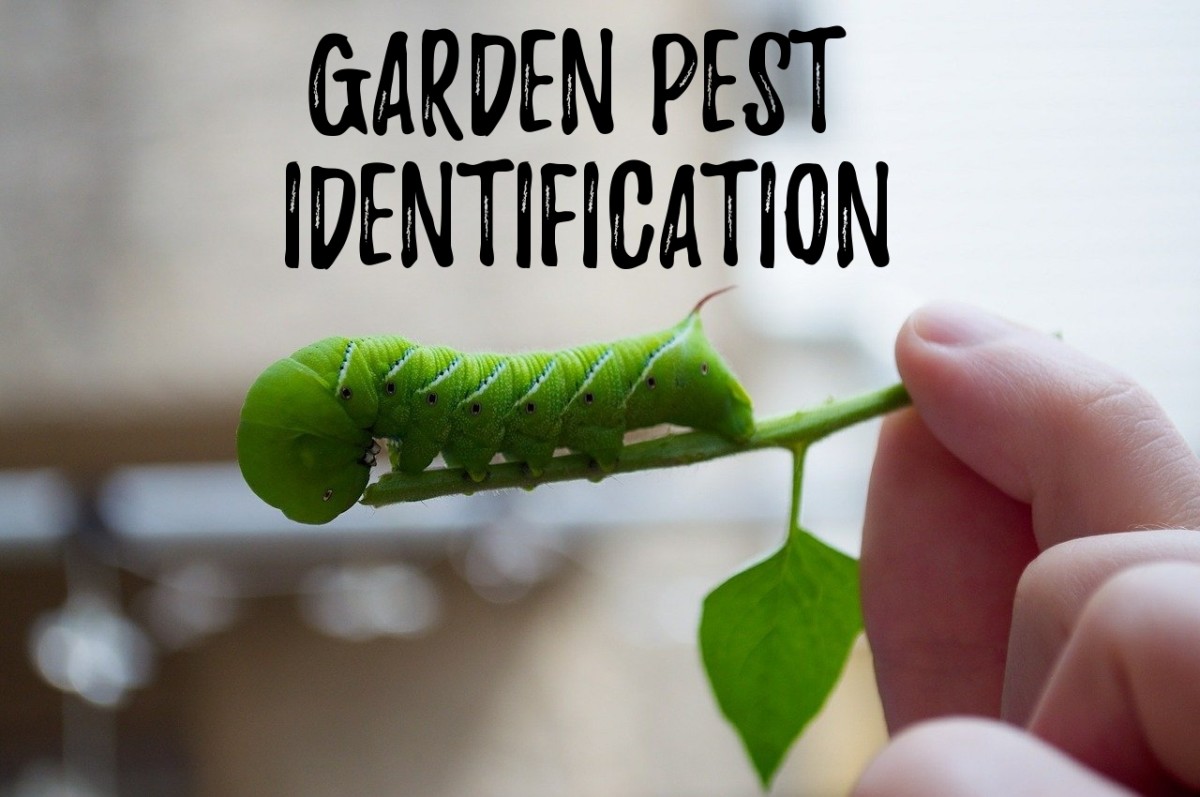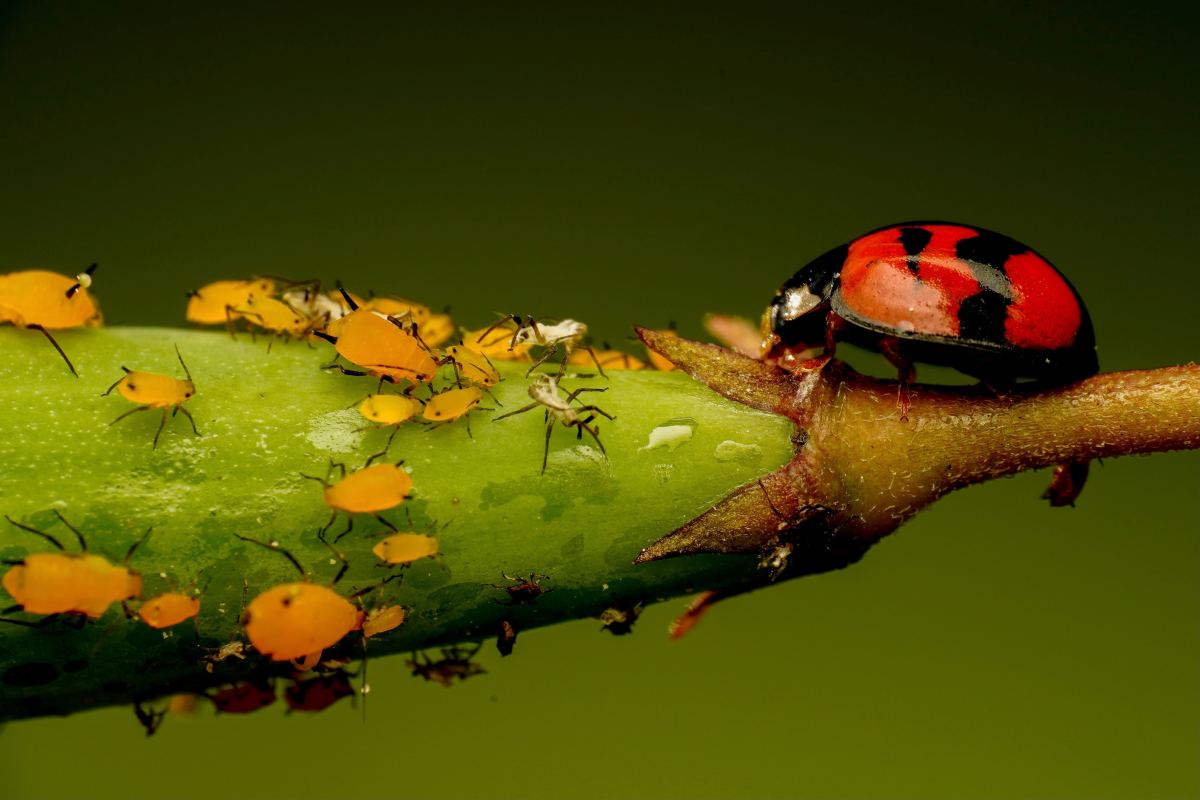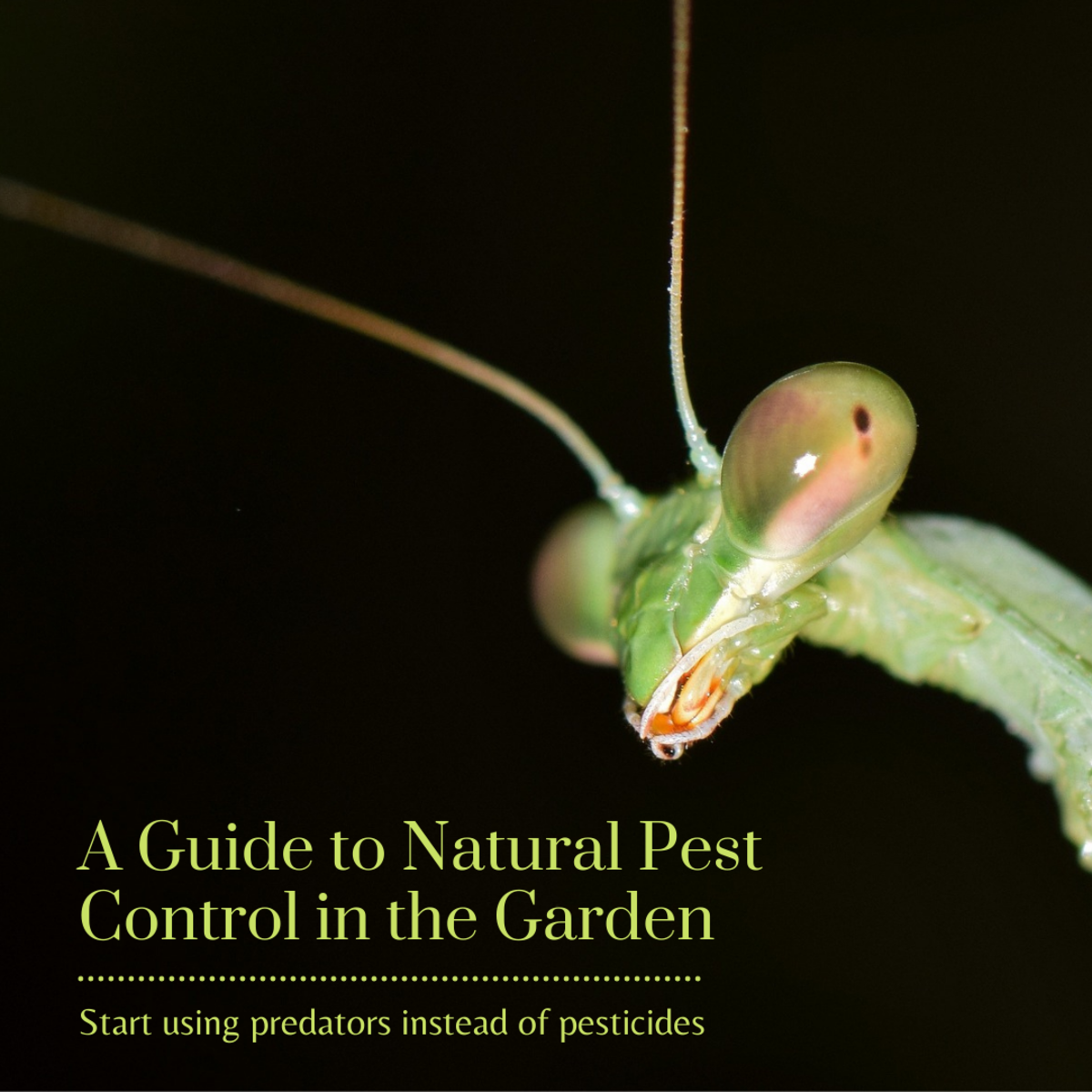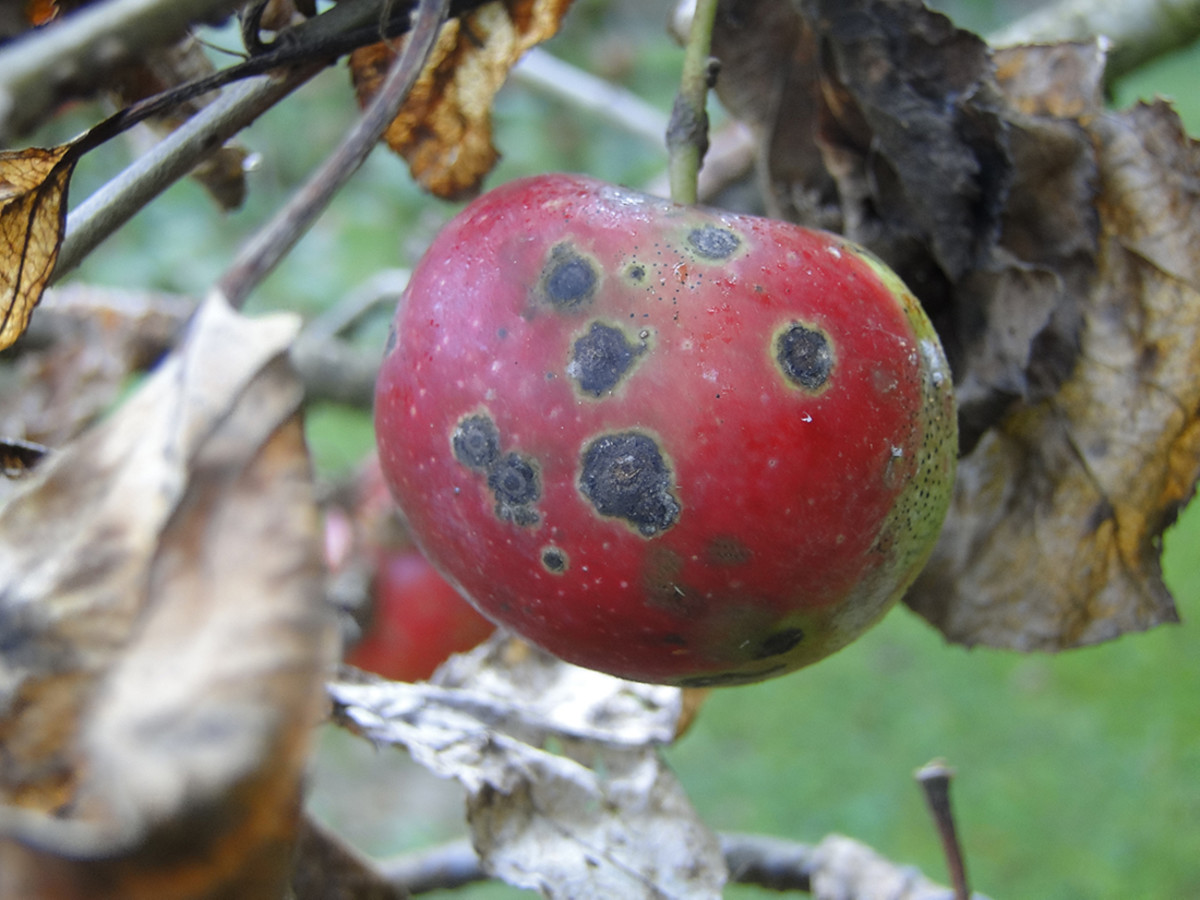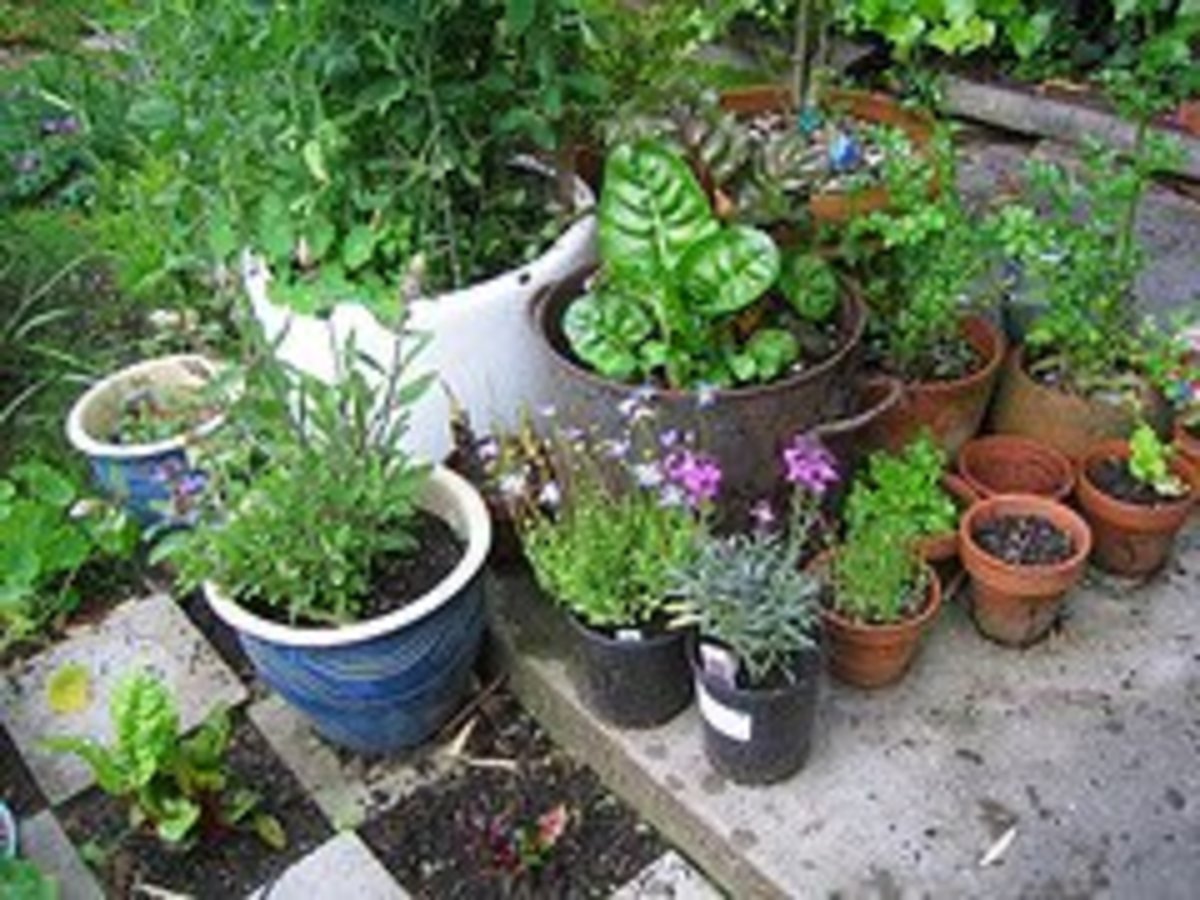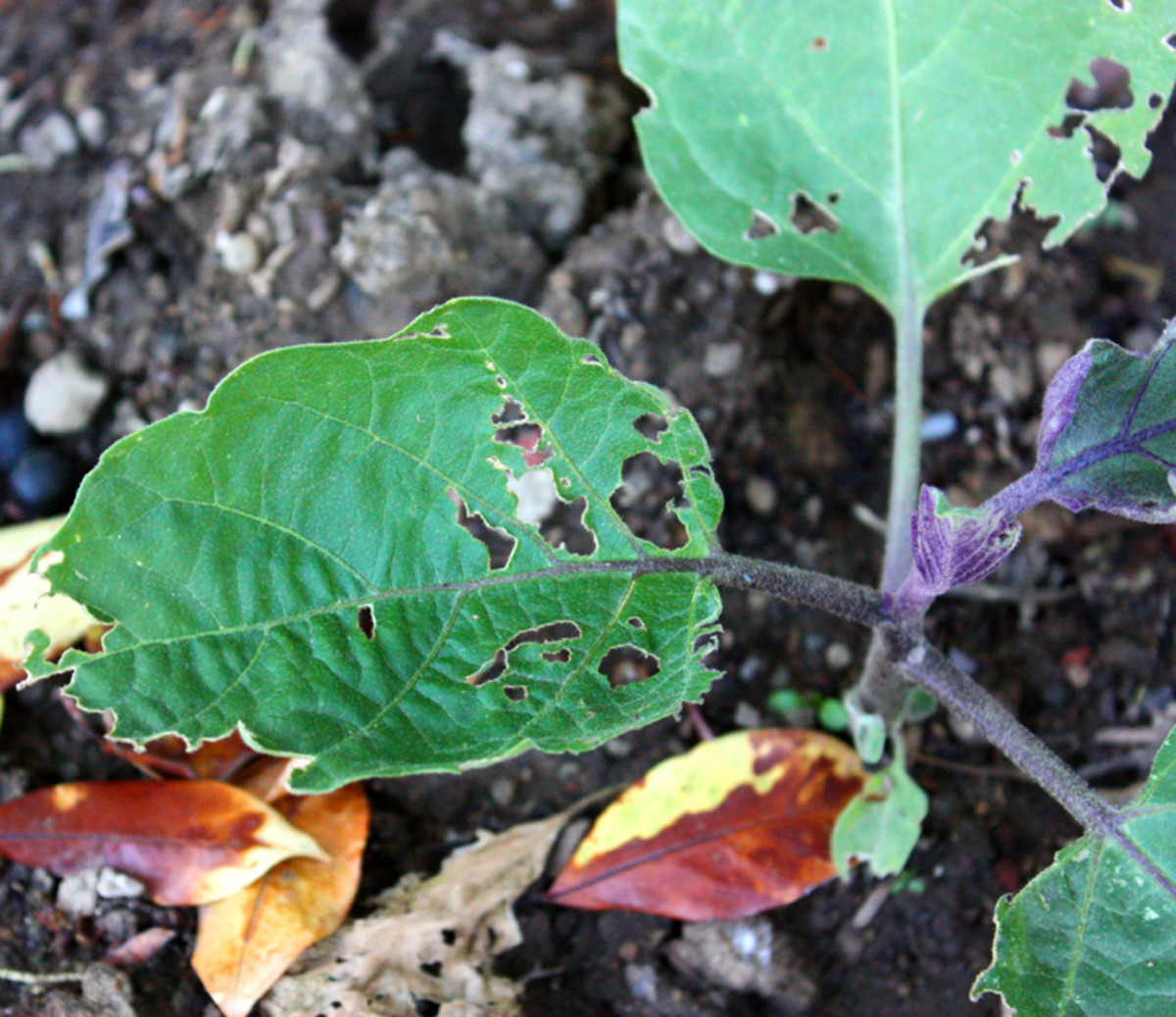Top Ten Garden Insect Pests of the US and How to Control Them Organically
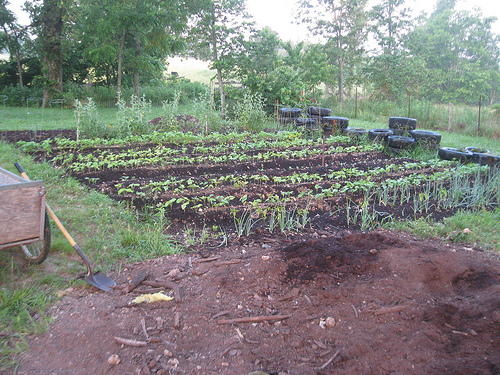
A Common Insect Identification guide
Not all bugs that you'll find in your garden are bad, but even if you find these insect pests in small numbers in your garden, you don't need to douse your garden with pesticides. Although not every garden will have problems with all of these insects, nor is this a comprehensive list of insect pests that we here in the United States or Canada might have to face, this article provides a starting point to help gardeners realize that relying entirely on organic pest control does not mean that you have to settle for damaged fruits and vegetables.
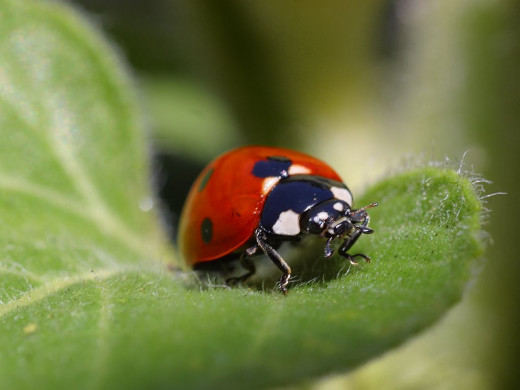
Common Garden Insect Pest: Aphids
Aphids will suck the plant sap of most fruits, vegetables, flowers, ornamentals, and shade trees throughout North America. You will know that your plants have been attacked by aphids because the foliage will distort and the leaves will begin to drop. Aphids also spread viral diseases from plant to plant.
To prevent aphid damage, make your habitat friendly to predatory insects such as ladybugs, aphid midges, and lacewings. Healthy plants planted in healthy soil also help prevent aphid infestations.
If plants are attacked by aphids, spray with garlic spray, or soapy water.
Cabbage Maggot
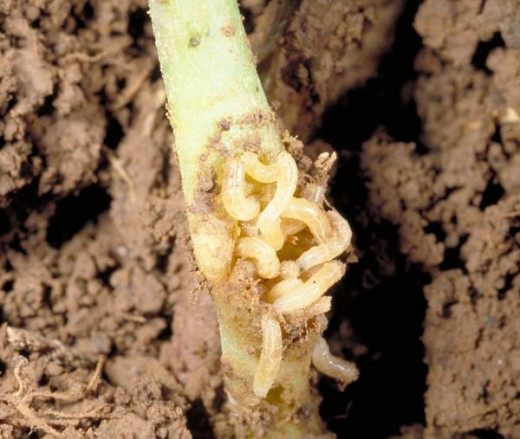
Common Garden Insect Pest: Cabbage Maggot
The cabbage root fly maggot attacks all members of the cabbage family (cabbage, broccoli, turnip, radish, etc.) and can do serious damage to these plants. Maggots often eat the entire roots of the cabbage. In roots like radishes, the maggots form tunnels making the roots not fit to eat. These larvae are yellow-white legless maggots that can grow to ten millimeters long. They are headless but have two dark-colored mandibles.
The adult cabbage fly is about 7-9 millimeters long grey fly that looks similar to a housefly.
To prevent cabbage fly infestation, lay out black plastic on the ground and plant transplants in holes in the plastic, then cover with floating row covers. Another option is to delay until after the first generation has developed. Also, you can apply parasitic nematodes around roots and avoid planting members of the cabbage family in the same location that you planted them the year previously.
To control infestations that have already started, spread wood ashes, diatomaceous earth, or ground cayenne pepper around plant stems.
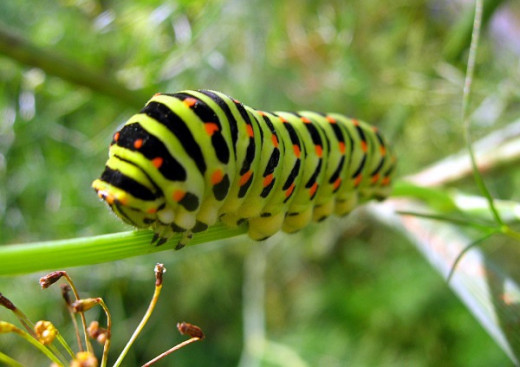
Common Garden Insect Pest: Caterpillars (various species)
Many varieties of caterpillars exist in the US. These soft segmented larvae have a distinct harder head than the rest of the body. They have six legs in the front and fleshy false legs in the back segments. They attach many fruits, vegetables, ornamental plants, and shade trees. Caterpillars chew leaves along margins, breaking off produce, and tunneling into some fruit.
Prevent caterpillars from attacking by encouraging native predators and parasites. Handpick caterpillars that you see.
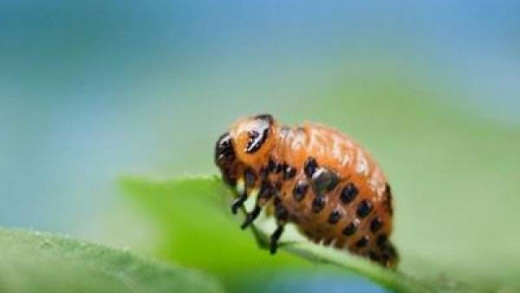
Common Garden Insect Pest: Colorado Potato Beetle
The Colorado Potato beetles are yellow-orange beetles with black stripes on the wing covers that had larvae which were orange hump-backed grubs with black spots along the sides. The eggs of these beetles are yellow overs laid in upright clusters. These beetles defoliate potatoes, tomatoes, eggplants, and petunias throughout North America, reducing harvest and even killing young plants.
To prevent infestation of apply floating row covers over young plants, encourage native predators, and use deep straw mulches. To control infestation, handpick beetles and spray plants with hot pepper powder infused in water.
Cutworm
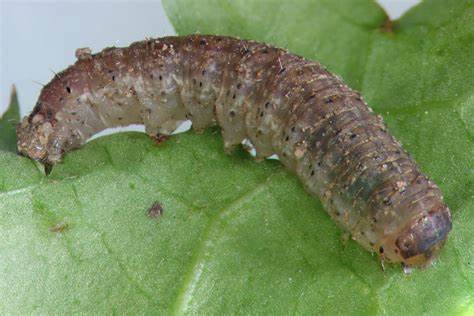
Common Garden Insect Pest: Cutworms
Several types of cutworms exist and they are all active at night. Most early vegetable and flower seedlings and transplants are susceptible to cutworms. Cutworms chew through the stems of plants at ground level. They do most of their damage when fruit trees are in bloom in the spring and a month thereafter.
To prevent cutworm damage, always put collars around transplants and handpick any cutworms that you find when you're tilling the soil.
Flea Beetle
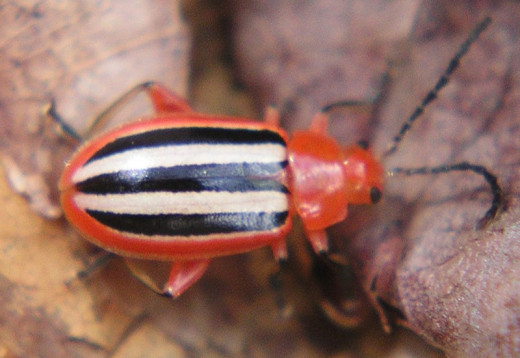
Common Garden Insect Pest: Flea Beetles
The small dark flea beetles (several species) jump like fleas when they are disturbed. Most vegetable crops in North America are affected by these beetles. The adults chew numerous small round holes in the leaves and mostly damage young plants. The larvae feed on plant roots.
To avoid infestation, cover plants with a floating row cover. To rid your plants of infestation, dust plants with wood ashes or Diatomaceous earth.
Japanese Beetle
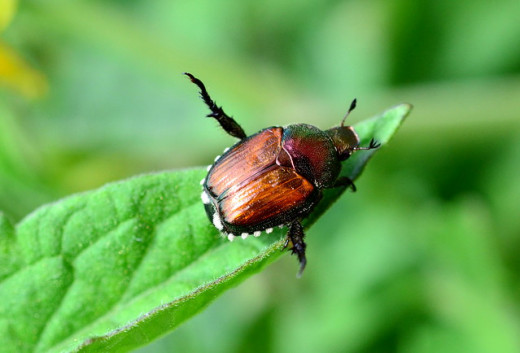
Common Garden Insect Pest: Japanese Beetle
Japanese beetle adults are metallic blue-green beetles with bronze wing covers. Their larvae are fat white grubs with brown heads. These pests damage many vegetables, flowers, and small fruit. These beetles skeletonize leaves and flowers and may completely defoliate plants. The larvae feed on plant roots.
I only have had problems with this insect once and it occurred after a neighboring farm chemically sprayed their fields with insecticide. To control infestation, I shook beetles from plants early in the morning and applied floating row covers.
Mexican Bean Beetle
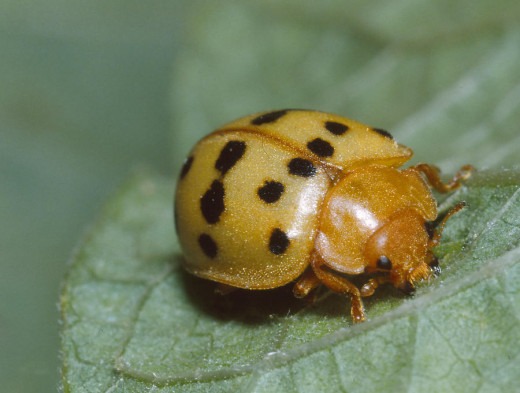
Common Garden Insect Pest: Mexican Bean Beetle
The first time I saw this bug on my green beans, I thought it was a ladybug. I was wrong! the adults are oval, yellow-brown with black spots on their wing covers. The larvae are fat dark yellow grubs with long branched spines.
These beetles affect all types of beans and are found east of the Mississippi and in parts of Arizona, Colorado, Nebraska, Texas, and Utah. The beetles and the larvae chew leaves from the underside leaving a lacy appearance of the leaves. They defoliate the leaves, thereby killing the plants.
To control these beetles, I plant my beans early, apply floating row covers, and handpick any beetles I find. If these beetles continue to be a problem, I might consider releasing spined soldier bugs. These bugs are natural predators against these pests.
Common Garden Insect Pest: Scales
More than 200 varieties of scales exist. Female adults look like hard or soft bumps on stems, fruits, and leaves. males appear as minute flying insects. The larvae are tiny, soft, and craw and have thread-like mouthparts. They affect many fruits, indoor plants, ornamental shrubs, and trees. They are found throughout North America.
At all stages of growth, scales suck plant sap and weaken plants. The plants become yellow, drop leaves and die.
To treat an infestation, prune out infested plant parts. Provide biological control by scrubbing the scale from twigs with a soft brush and soapy water. Rinse well.
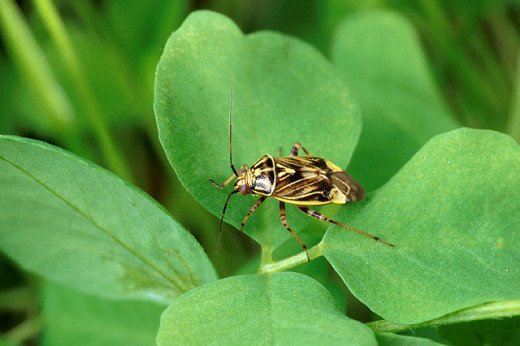
Common Garden Insect Pest: Tarnished Plant Bug
Tarnished plant bugs are fast-moving, mottled green or brown bugs with front wings of yellow triangles, tipped in black. Nymphs are similar to adults but wingless. These bugs are found in many flowers, fruits, and vegetables throughout North America.
In adult and nymph forms, these bugs suck plant juices causing leaf and fruit distortions, wilting and stunting.
To prevent infestation by tarnished plant bugs, apply floating row covers and encourage native predatory insects.
This content is accurate and true to the best of the author’s knowledge and is not meant to substitute for formal and individualized advice from a qualified professional.
© 2014 Cygnet Brown

